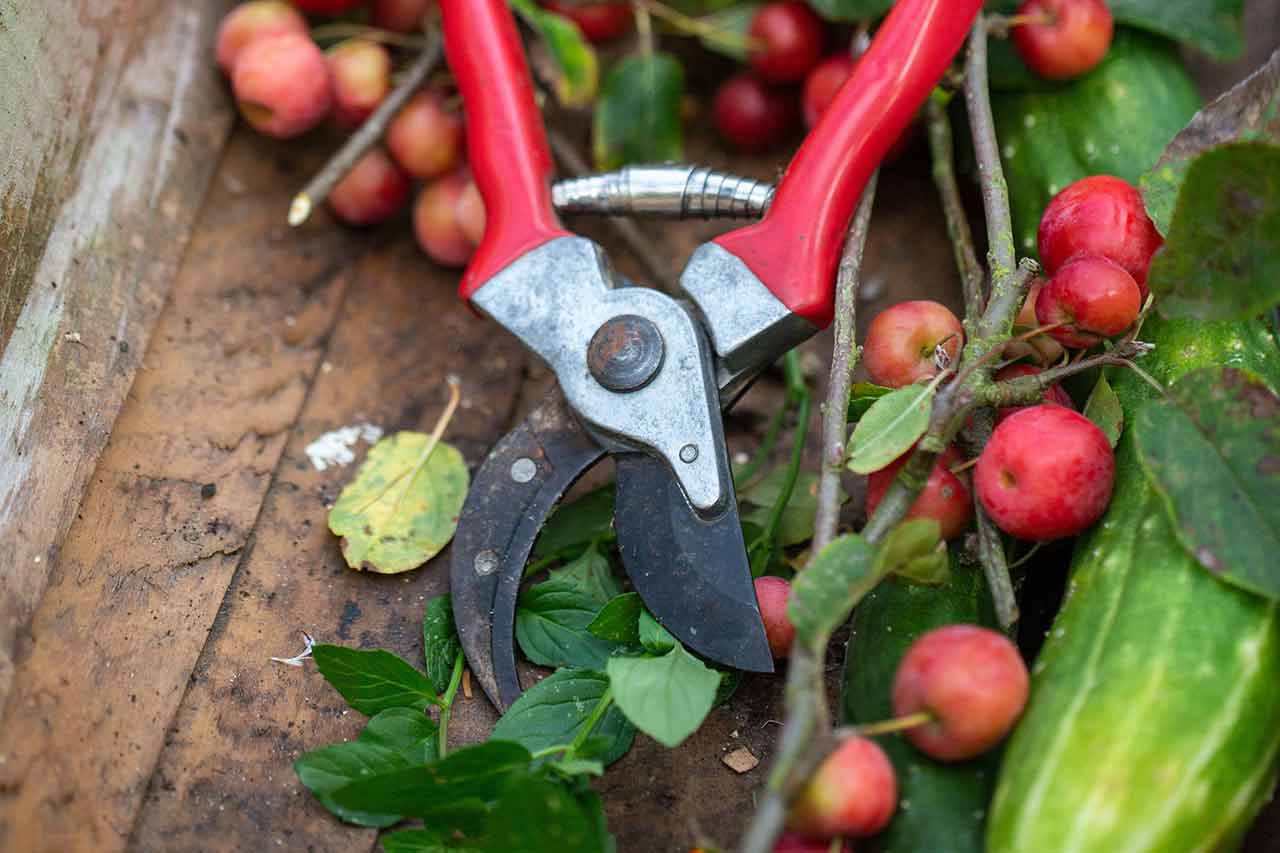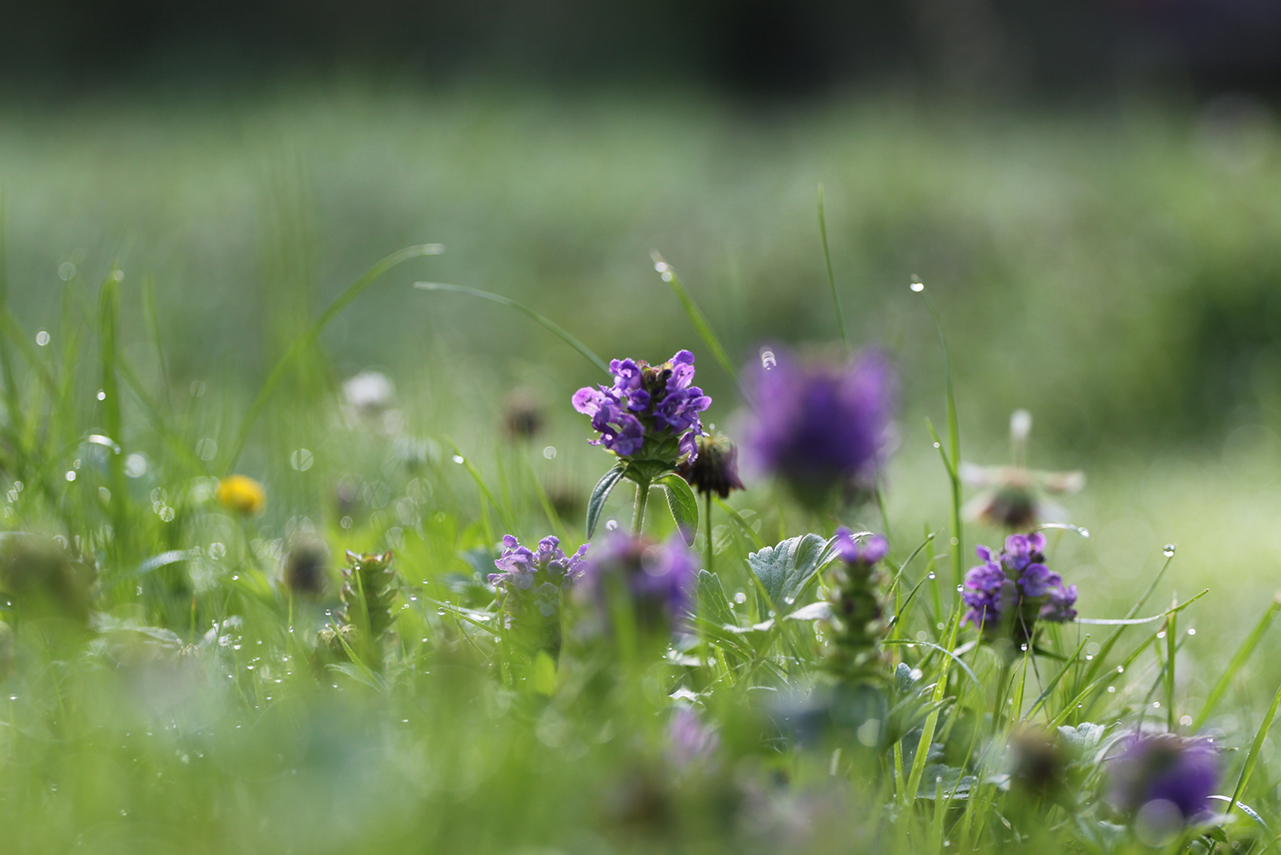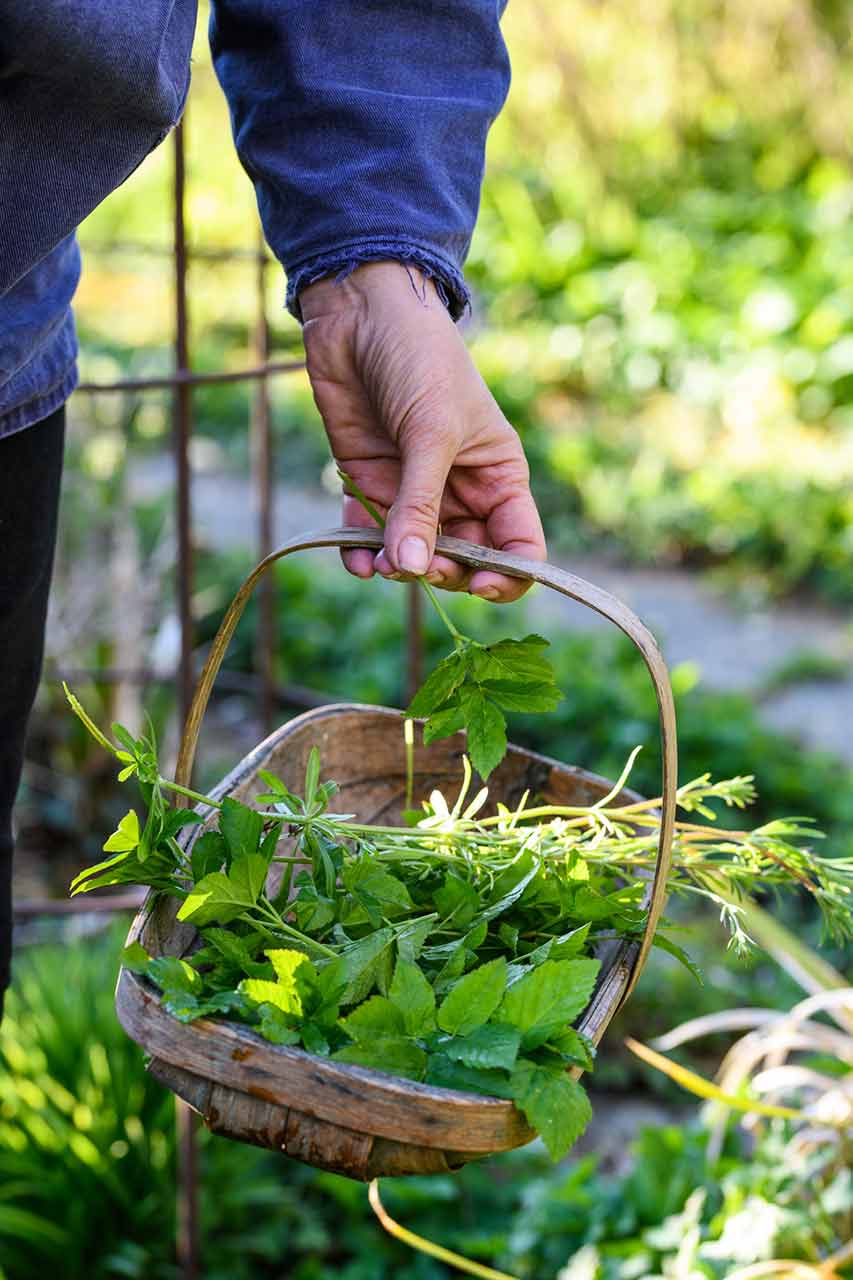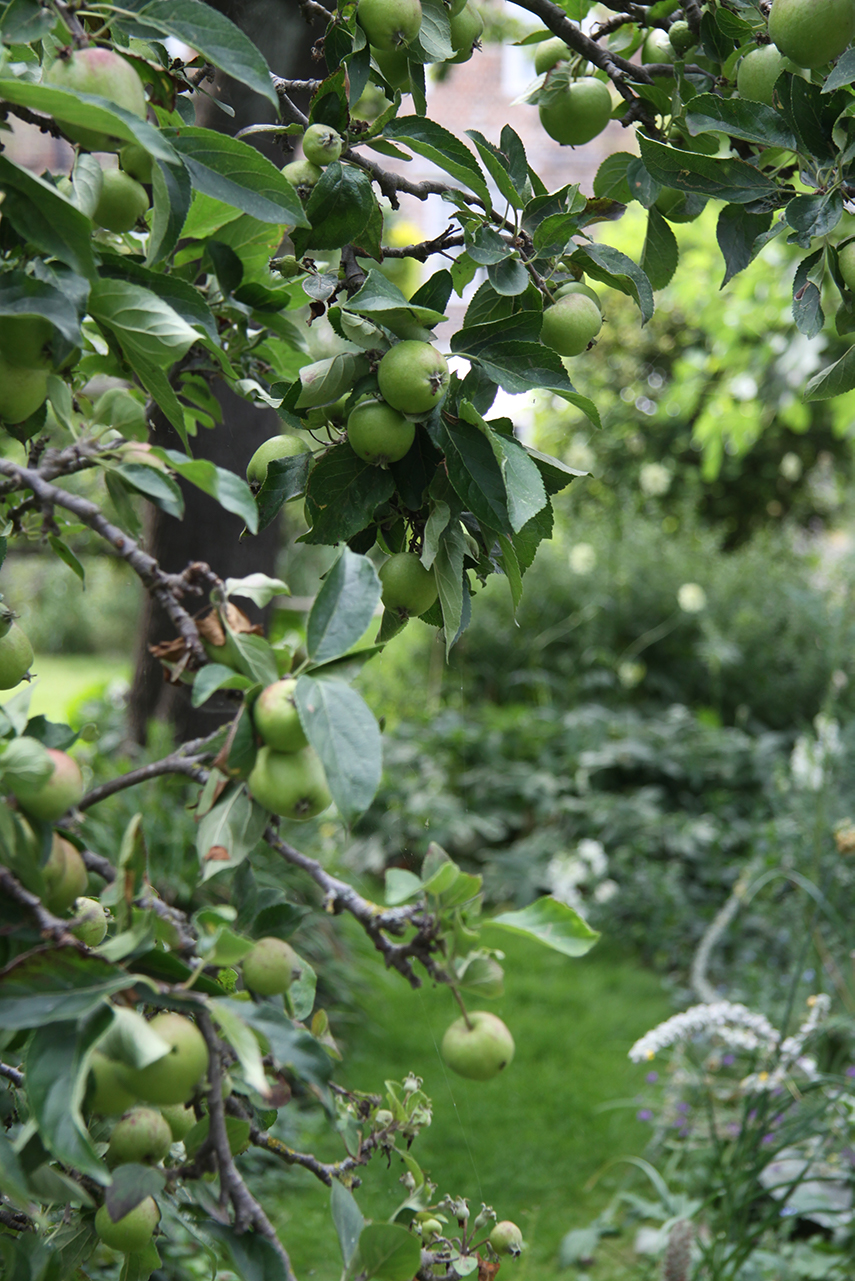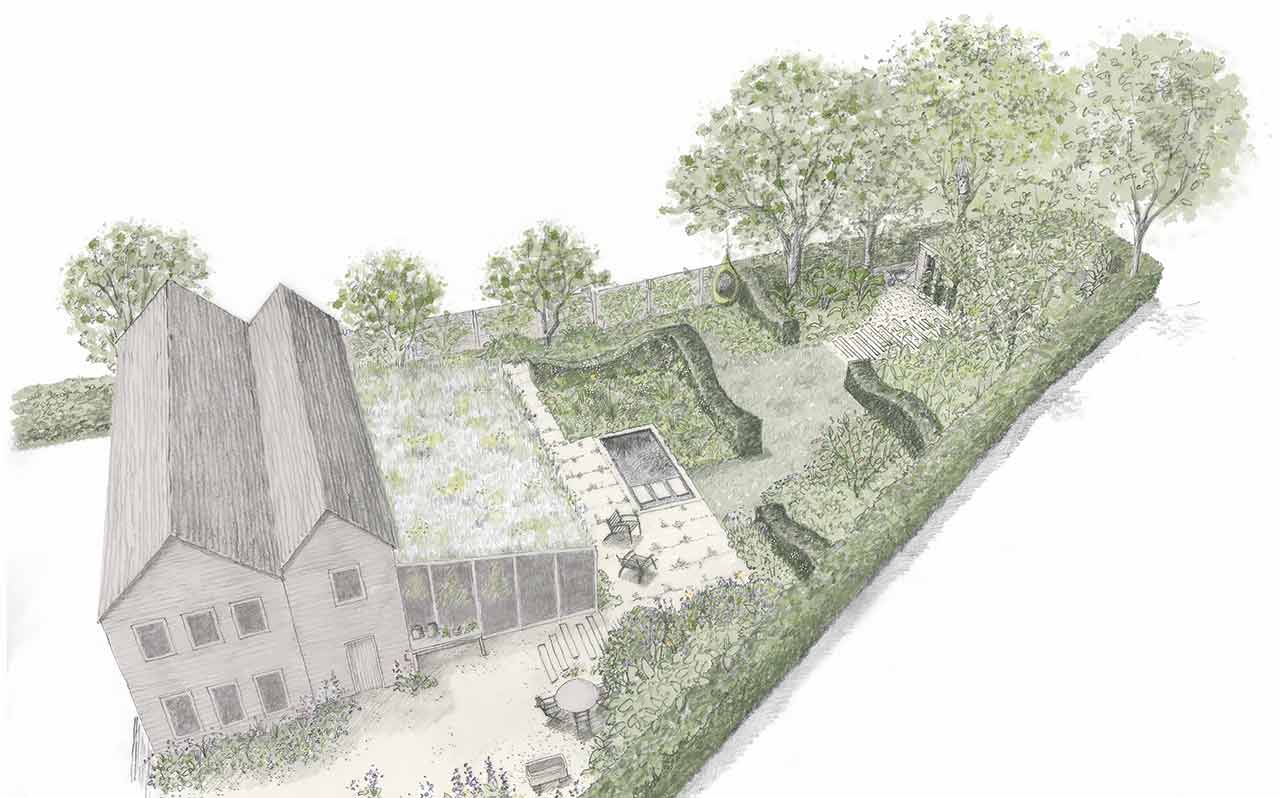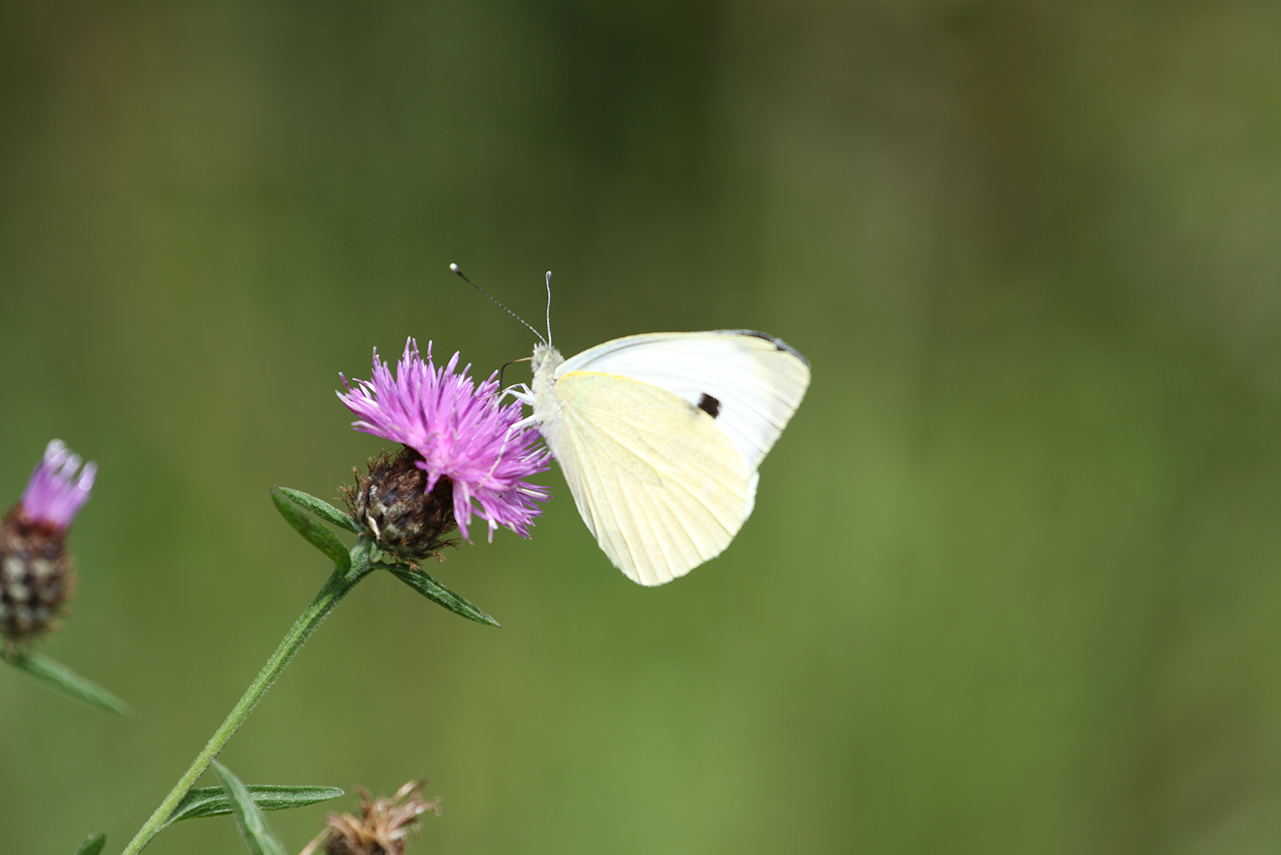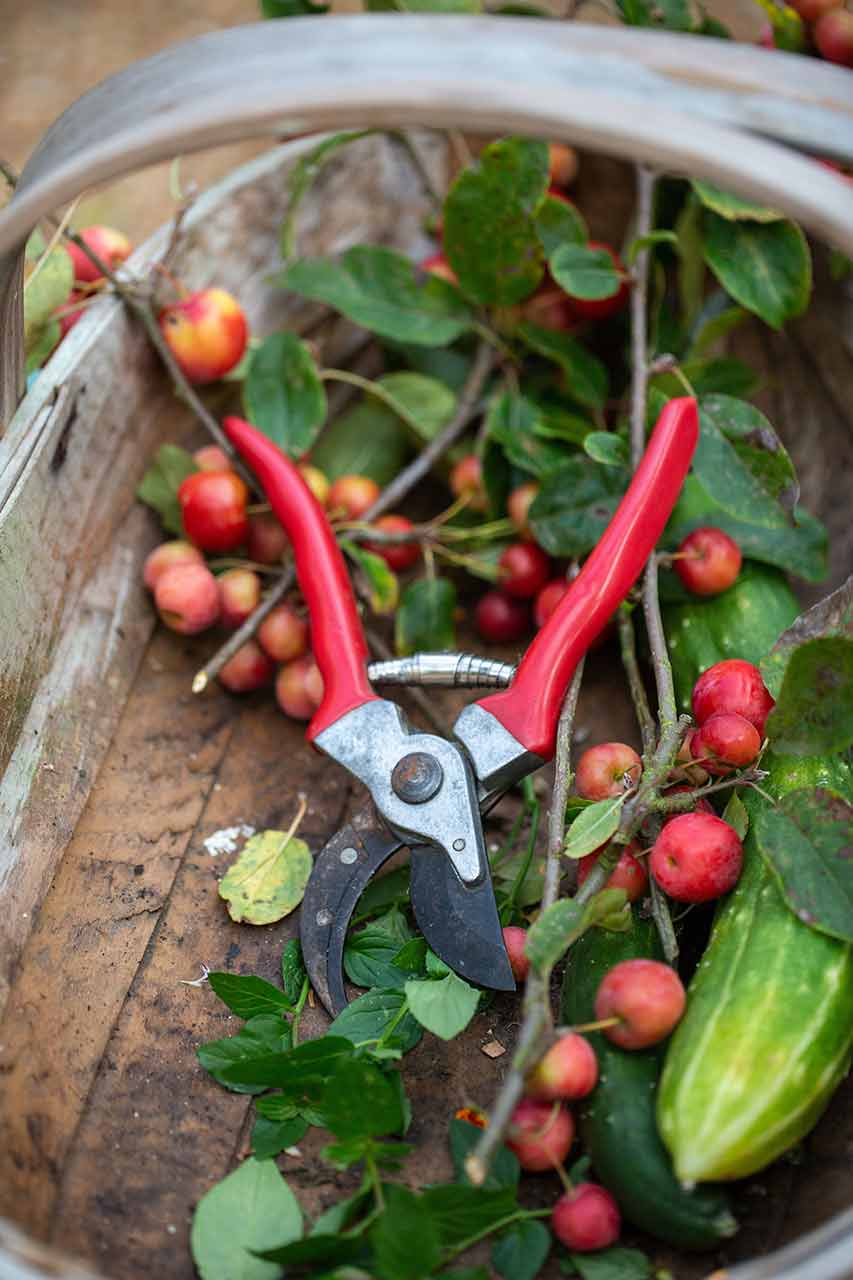CREATING A MODERN APOTHECARY GARDEN
Since ancient times gardens have offered protection, nourishment and delight. Marian suggests how to turn your outside space into a personal paradise.
Health and energy
Our health and energy is firmly entwined with the land around us and what grows on it, including the bits we eat. We know that a little gardening is good for us, so why not combine this with what we grow in a health-giving garden?
From the beautifully laid out Plan of Saint Gall, which depicts a 9th-century Benedictine monastery, to the useful teaching beds of the Chelsea Physic Garden, founded by the Worshipful Society of Apothecaries in the 17th century and still open for guidance, and the humble kitchen gardens on display at the Weald & Downland Living Museum in West Sussex, we know that our forebears grew all manner of useful plants. Indeed our habit of dividing plants into ‘useful’ and ‘ornamental’ is relatively new, with plants being used for seasoning, fragrance, dye, fibre, food and medicine since time immemorial, and medicine meaning preserving health, not just healing sickness.
Many of the beneficial plants we can add to our food are very easy to grow. Rather than buying new plants every year, I like the integrated approach that aims to create a sustainable mini ecosystem using mainly perennial plants. There are excellent books on permaculture, including Michael Crawford’s Creating a Forest Garden, but we can just as validly dip our toes in without diving wholesale into herb spirals and Hügelkultur.
Taking a layered approach
The key is the layered approach that learns from nature how different plants interact beneficially. It needn’t even look unruly. I like to marry loose planting with clean design lines and in the garden in the plan shown left we based the layout on artist Ben Nicholson’s overlapping cube shapes to complement the contemporary house and create a garden in layered blocks.
The approach starts with shelter, especially on a windy site. Plan for a shelter belt with edible hedges, climbers on vertical surfaces and different height trees. In a smaller site fruit and nut trees provide dappled shade, sequester carbon and allow the roots to begin communicating between plants. Buy trees young and allow enough space between their mature canopies to allow sunlight to reach the plants below.
Raised borders or paths help access and define areas. By not digging we protect the soil structure and the microbes below as well as saving our backs. Groundcover keeps warmth and moisture in, excludes uninvited weeds and feeds the soil and the plants with essential minerals. Nitrogen fixers, such as clover or phacelia, can be dug in or mown over before setting seed and used as mulch to break down gradually. Planting in small sizes reduces cost and allows plants to establish their root systems early.
Shrubs provide the next layer and give shape and form. If your garden is near the sea then opt for an Elaeagnus, which will survive salty wind, fix nitrogen and give berries, while for gardens inland a Cornus mas, Amelanchier or shrub rose will offer blossom, berries or hips and fabulous autumn colour.
A favourite herbaceous layer combination is the Native American idea known as the three sisters, which combines sweetcorn, beans and squash. The beans climb up the corn stems as they grow, fixing nitrogen at the roots, and then the large squash leaves curl around the bases and keep other plants and weeds at bay.
Herbal helpers
Some herbs are very easy from seed, such as calendula, whose petals look beautiful in salads or frozen into ice cubes and which are said to have healing properties when used in an infusion, and can help to soothe skin when used in a massage oil. Others, such as lavender, are shrubs that can be placed under kitchen windows to keep flies away, be dried as a moth repellent to line your drawers or popped under your pillow to help you sleep. Rosemary beneath the washing line gives sheets that extra fresh smell and I like to keep digestive-aiding mint in pots to pick for tea on my way to the studio. We also allow comfrey to creep under the hedges for comfrey tea (a plant tonic) and always leave a patch of brambles for berries and to shelter birds, hedgehogs and dormice.
Water collected in a swale, water butt or a trough can also be enjoyed by swooping bats and birds, while a shallow bowl or a moss-covered stone is ideal to allow bees to drink.
And don’t discount what nature provides without your intervention, such as a spontaneous blooming of lemon balm (good for alleviating stress) or nettles (used as a cleansing herb). Check in a good herbal guide before eating any plants you’re not sure of, but if it’s right for you, accept the gift.
Finally allow a patch of clover lawn to do some yoga, stretching and relaxing, as the most important tools to keep maintained are our own bodies.
This article first appeared in Gardens Illustrated Magazine, October 2019
